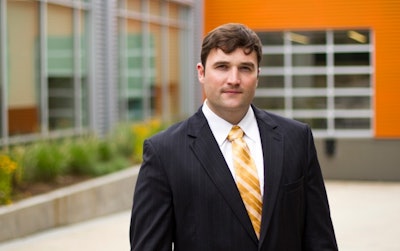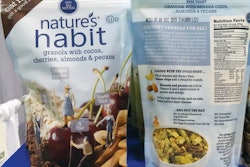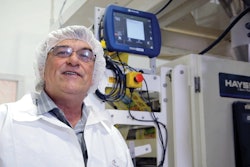Packaging World: How would you describe Edison Nation Medical?
Bobby Grajewski: Edison Nation Medical is a healthcare innovation marketplace with expertise in open innovation, product development, and medicine. We’re based in Charlotte, NC, and were born out of collaboration with Carolinas HealthCare System (one of the largest public health system in the U.S.). Our mission is to create more effective, more efficient, and safer healthcare by providing nurses, entrepreneurs, even patients and caregivers, a means to submit a medical invention idea for full evaluation and potential commercialization and by helping inventors to break through the traditional barriers of healthcare innovation. We focus on three main areas: acute care, durable medical equipment, and retail consumer products that you might see on the shelves at Rite Aid, Walgreens, CVS, etc. These are all medical products, not pharmaceuticals.
There are numerous challenges in bringing any product to commercialization, but in the healthcare space that becomes even more difficult given financial issues, regulatory matters, clinical trials, and so forth. How does ENM help entrepreneurs get through some of these barriers to market?
We do that by breaking down the traditional barriers that have inhibited the individual from taking part in the innovation process. Individual inventors often lack access to capital and expertise and knowing how to build out a business. Some are risk-averse and have no desire to quit their regular job to become an entrepreneur. Or they lack access to the healthcare supply chain, which is a critical aspect of launching a successful medical innovation. Through our online portal at EdisonNationMedical.com, individuals or small businesses can submit their healthcare innovation idea for full medical efficacy, intellectual property, and market commercialization evaluation. If our evaluation team agrees the idea has value we look to unlock that value, matching the innovative technology with a manufacturer that has the operational, sales, and distribution capabilities to ensure the new medical invention gets to market successfully.
What does this service cost in financial terms?
Submitting an idea to Edison Nation Medical costs $25 and that’s the only fee an inventor will ever be charged by Edison Nation Medical. After conducting a thorough evaluation, if we agree an invention has strong market potential, we invest 100% of all subsequent dollars necessary to further design, prototype, patent, and develop the idea so that it’s more attractive for potential licensing or acquisition. We are very careful in selecting the products we invest time and money to commercialize, since Edison Nation Medical only recoups this investment when we are successful bringing that inventor’s idea to life. For every product licensed, at least 50% of that royalty goes to the inventor. That balance is what Edison Nation Medical receives and is how we generate revenue for our business. In select cases, we will take a technology innovation submitted to us and “incubate” the idea (i.e., build a company around it), allowing the inventor to take part in the ownership of the company. Even if they choose not to be a part of that, they will receive at least half of the royalty that’s paid to the new company.
What role does packaging play in this entire process?
Packaging of medical products plays a critical role in the useability and even safety of medical products. There are inventors who definitely understand the importance of packaging and we regularly receive submission ideas from individuals who have novel ways of repackaging existing products to improve the useability or safety. The exact ideas depend on the type of product, be it durable medical equipment used in acute care facilities, or home medical equipment products like walkers and canes, or retail-focused products. We work with a wide breadth of innovation that typically reflects the transitioning states of healthcare today. For example, more and more healthcare is being delivered and administered outside of the traditional brick and mortar hospital and into the home.
Ideas get submitted to us that range from sketches on the back of napkins to products that are already generating some early sales in the market, and this can be anything from a brace or splint to an implantable device to software apps with a pageable device component, etc.
Patient adherence to medication regimens continues to gain importance, especially with readmissions being a significant concern as part of the Affordable Care Act. We are seeing a lot of interesting technologies come through our pipeline ranging from smart pill bottles that alert people to take medicine or that are synched into the cloud to provide feedback loops to caregivers or providers. These innovations aim to help ensure adherence, using new kinds of packaging that make the delivery of healthcare and pill intake simpler and easier for patients to understand. That’s especially important for people who are recovering or are in pain or who may be a little bit older and not as mentally strong.
Once you have a product and all of its variables and issues are worked out, how does ENM help the innovator put that product into packaging that will successfully proceed through what can be a highly complex distribution process?
Once we develop a product or a technology, we then license that technology to a medical manufacture that often handles the packaging and how the product will be delivered. We have very experienced in-house design expertise to help when necessary, but many of the medical manufacturers we work with are large enough and sophisticated enough to already have strong capabilities in this regard.
In a case where we are incubating a company and thus building a management team around that product and taking it to market ourselves, we work with our in-house designers who will often look to our packaging partners for support. Another approach might be an instance where we have actually received the packaging technology from the inventor and then see how to best incorporate it into a supplier’s manufacturing capabilities. For example, we’re working on a new diaper product line using a newly patented non-woven technology for the diaper and a unique packaging solution that helps compress diapers into single-use packs. For instance, we can take an adult’s incontinence diaper or a baby diaper, shrink-seal it into a perfect square package. So it’s an individual diaper that’s packaged, not a multipack of diapers. To make it even more unique, along with the diaper, the pack might also include a glove and a wipe that can fit into your pocket and be discreet.
That type of package also addresses the increasingly important issue of reimbursement in the changing healthcare system by providing an easier way to track the use of the diapers because you can sell them and track them on an individual, per-unit basis as opposed to a large pack.
Tell us more about these packaging partners.
These partnerships are groups with whom we are building relationships every day. We have reached out to some for their technology and we work with engineers and use our own prototyping capabilities in-house to further develop this. But, as we are taking a product to market, we certainly are looking for groups that might be interested in licensing it and/or incorporating it into their own product. We deal with packaging often on a case-by-case basis. These could be materials or machinery suppliers, or contract manufacturers or packagers. So in the case of these individual diapers we’re working with a diaper company that could license the technology and then we would work together with a packager that would help take that technology or product and package it to give it its best chance for success in the commercial marketplace.


























